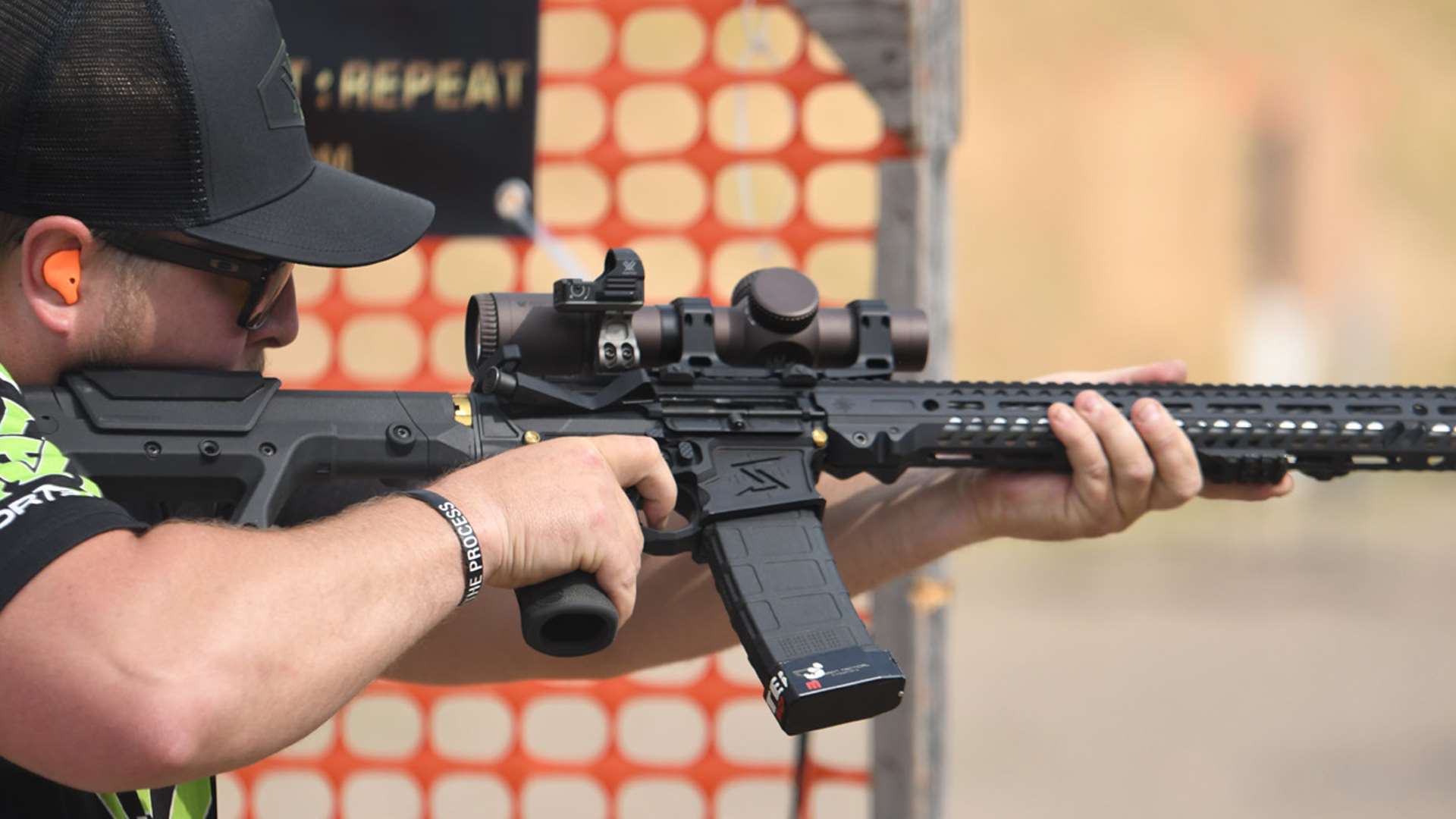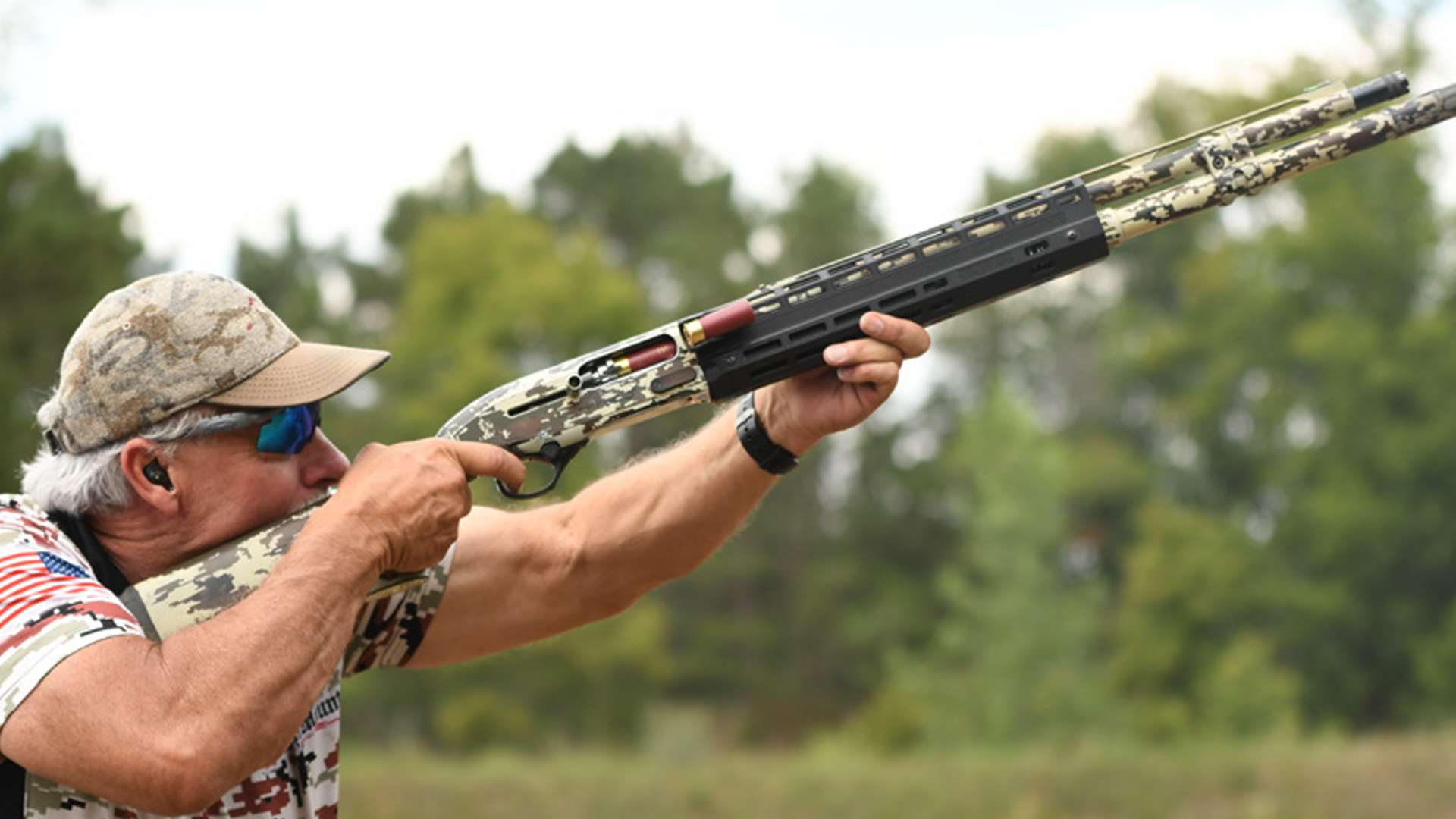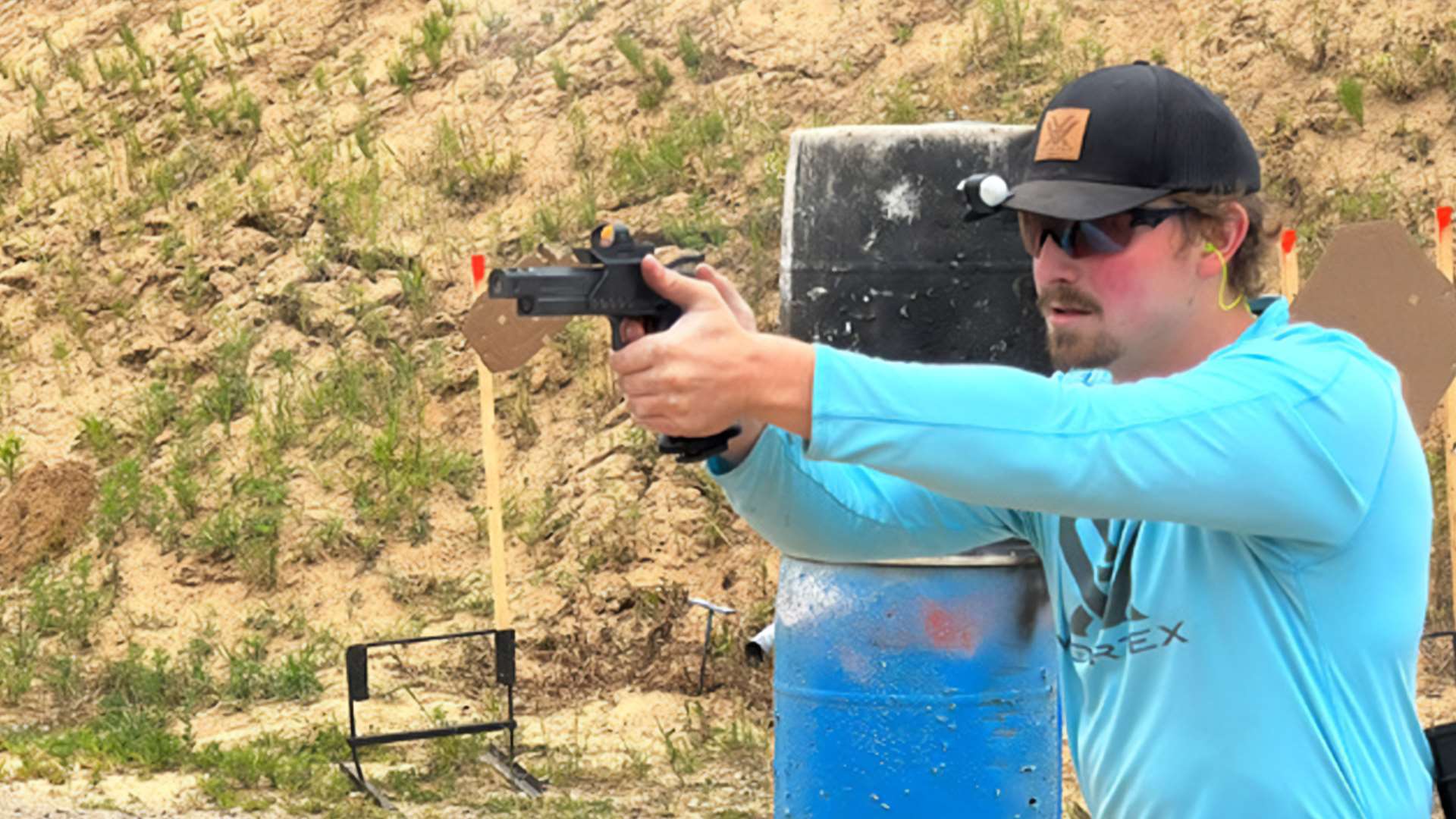
USPSA incorporated long guns into its competitive roster shortly after its establishment in 1983. Originally known as the “3-Gun competition,” this event saw participants operate each firearm on its designated course, with little to no interaction between the different guns. Responding to enthusiasts who wished to challenge themselves with all three firearms in a single stage—and inspired by the pioneering spirit of “outlaw” matches—USPSA introduced the Multi-Gun competition.
In USPSA Multi-Gun contests, shooters face a series of challenges that may require a mix of rifle, shotgun and handgun usage. The appeal of these competitions lies in their complexity and vigorous nature, continuing the USPSA’s tradition of emphasizing precision and swiftness. Mastering a trio of firearms demands a wide range of abilities and tailored equipment, propelling the popularity of the sport by presenting an exhilarating and multifaceted test of skill.

The evolution of sporting rifles, especially the AR-15 and its derivatives, has been significantly influenced by their use in USPSA Multi-Gun competitions. Formerly avant-garde semi-automatic shotguns have also progressed, now replaced by faster, more specialized designs tailored to these events. The box-fed shotgun is now a fixture in Open division. Moreover, the accessories for ammunition management have advanced in tandem, catering to a need for rapid and accurate reloading on the move. Nowadays, it is typical to see competitors wearing an array of advanced magazine and shotshell holders, all intended to facilitate quick reloading during intense stages.
Safety is paramount in USPSA events, and Multi-Gun matches are no exception. These matches uphold a specific set of regulations that mirror the handgun competition rules, emphasizing the safe handling of firearms. These updated guidelines are accessible at the USPSA website.
USPSA Multi-Gun competitions are divided into six divisions, differentiated by the firearms used. While “major” and “minor” power factors are outlined for each division, a growing number of matches now employ Time Plus scoring, which shifts the focus from power to precision and promptness. However, competitions can also be conducted using Hit Factor scoring.

The USPSA Multi-Gun rules permit matches to recognize single-gun formats with either rifle or shotgun, as well as two-gun divisions such as rifle and pistol or Pistol-Caliber Carbine (PCC) and pistol. These formats, particularly the single-gun matches, have seen an upsurge in popularity due to the reduced gear and ammunition requirements, making participation more accessible. After all, there’s an undeniable joy in hitting the range with just a rifle or shotgun, skillfully navigating the stages.
For a deeper dive into these rules and scoring systems, the USPSA has made a comprehensive guide accessible online at its website.
OPEN DIVISION
Competitors in the Open division enjoy the most freedom. They may equip their firearms with compensators, which help to reduce recoil and muzzle climb, as well as any combination of scopes and electronic sights on all three guns. Other permitted modifications include bipods, flashlights and lasers. In addition, Open division shotguns can have unlimited ammunition capacity and may be fully loaded at the start; both speedloader tubes and magazines are permissible.

TACTICAL DIVISION
The Tactical division requires handguns to adhere to the USPSA Limited division rules, which prohibit compensators, barrel ports or optics. Rifles may be equipped with a single optic and a small compensator but cannot have bipods, flashlights or lasers. For shotguns, competitors must limit the loading to a maximum of nine shells at the start, and neither shotgun speed loaders nor magazines are permitted.
LIMITED DIVISION
The Limited division imposes the same restrictions on handguns and shotguns as the Tactical division. The primary distinction for rifles is the allowance of only one non-magnifying optic, such as a 1X red-dot sight; telescopic sights are not permitted.
HEAVY METAL TACTICAL DIVISION
In the Heavy Metal Tactical division, handguns must comply with USPSA Limited 10 division rules and require a minimum caliber of .40. Rifles are restricted to .308 caliber, and shotguns must be 12-gauge. Loaded capacities are limited across all three firearms, and rifles and shotguns may follow the same rules regarding compensators and optics as in the Tactical division.
HEAVY METAL LIMITED DIVISION
This division mirrors the requirements of the Heavy Metal Tactical division, with the added stipulations that rifles cannot have any optics, and competitors must use a pump-action shotgun chambered in 12-gauge or larger. However, compensators are allowed on rifles within certain size restrictions.
PROVISIONAL MODIFIED DIVISION
Modified is a new provisional division in USPSA Multi-Gun competition. It allows handguns that fit the Limited division rules to have an optional optic mounted on the slide. Additionally, shotguns may start with a maximum of 13 rounds loaded and may also be equipped with a single non-magnified optic. Shotguns are permitted to have a single non-magnified optic as well.
HIT FACTOR VS. TIME PLUS SCORING
Some matches still use traditional USPSA hit factor scoring, but this is proving more difficult to do, since considerations for major pistol, minor rifle and major shotgun (or a different combination of all three) must be taken into account. The more popular method of scoring USPSA Multi-Gun matches is called Time Plus, so named because misses and failure to shoot at penalties are simply added into your score as additional time, not points. This scoring method uses your time as your score, as long as all targets are neutralized. Missed, failure to shoot at or poorly hit targets are penalized with additional time added. In this type of scoring, as in golf, the low score wins. It’s pretty simple and the courses of fire are much easier to score and reset. One A hit on a target or two hits anywhere on the target are enough to “neutralize” that target and not cost any penalty seconds. Don’t shoot at one, or miss one, and that will add considerable time to your final score.
USPSA Multi-Gun matches are gaining in popularity and growing across the country. Check your local club for the opportunity to shoot your AR and combat shotgun in competition.
Article from the 2024 Annual edition of USPSA’s magazine.

































